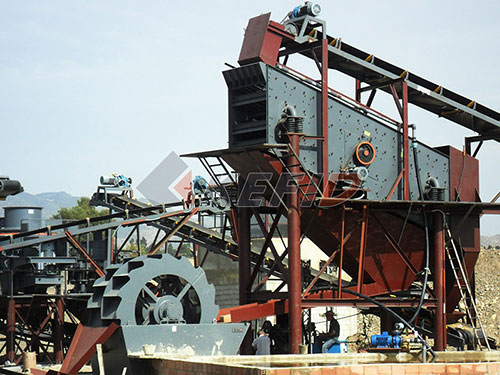Stone Crushing Plants In Kumbakonam
Stone Crushing Plants in Kumbakonam: Balancing Growth Against Environmental Harmony

Nestled amidst the fertile plains of Tamil Nadu's Cauvery Delta and renowned as a temple town pulsating with spiritual energy, Kumbakonam presents a landscape of contrasts. Among its paddy fields and ancient gopurams lies a significant industrial sector: stone crushing plants. These facilities are crucial cogs in India's vast construction machinery but operate within a delicate ecological and cultural setting, sparking complex dialogues about development and sustainability.
The Engine of Construction:
Stone crushing plants in Kumbakonam serve a vital economic function:
1. Raw Material Supply: They process quarried granite and hard rock into essential construction aggregates – crushed stone of various sizes (like 20mm, 12mm), gravel, grit, and manufactured sand (M-Sand).
2. Infrastructure Backbone: This processed material forms the literal foundation for roads, bridges, buildings (residential and commercial), concrete production, and other critical infrastructure projects across the district and beyond.
3. Local Economy: These plants generate direct employment opportunities (machine operators, laborers, drivers) and indirect jobs in logistics (trucking), maintenance services, and ancillary industries.
4. M-Sand Production: With restrictions on river sand mining due to environmental concerns, many Kumbakonam crushers have pivoted to producing M-Sand as a sustainable alternative for concrete work.
The Process:
Typically located on the outskirts or near quarry sources along major transport routes like highways connecting Trichy or Thanjavur (e.g., NH 36), these plants follow a standard process:
1. Primary Crushing: Large boulders fed into jaw crushers are broken down into smaller chunks.
2. Secondary Crushing: Cone crushers or impactors further reduce size.
3. Screening: Vibrating screens segregate material into specified sizes.

4. (Optional) Tertiary Crushing & Sand Making: For finer aggregates or M-Sand production.
5. Stockpiling & Dispatch: Finished products are stored before being loaded onto trucks for delivery.
Navigating Environmental Sensitivities:
Kumbakonam's unique location amplifies the environmental challenges inherent to stone crushing:
1. Air Pollution - Dust Generation: The primary concern is fugitive dust emissions from blasting (if quarries are integrated), crushing operations, screening points during dry weather can significantly impact air quality standards (PM


